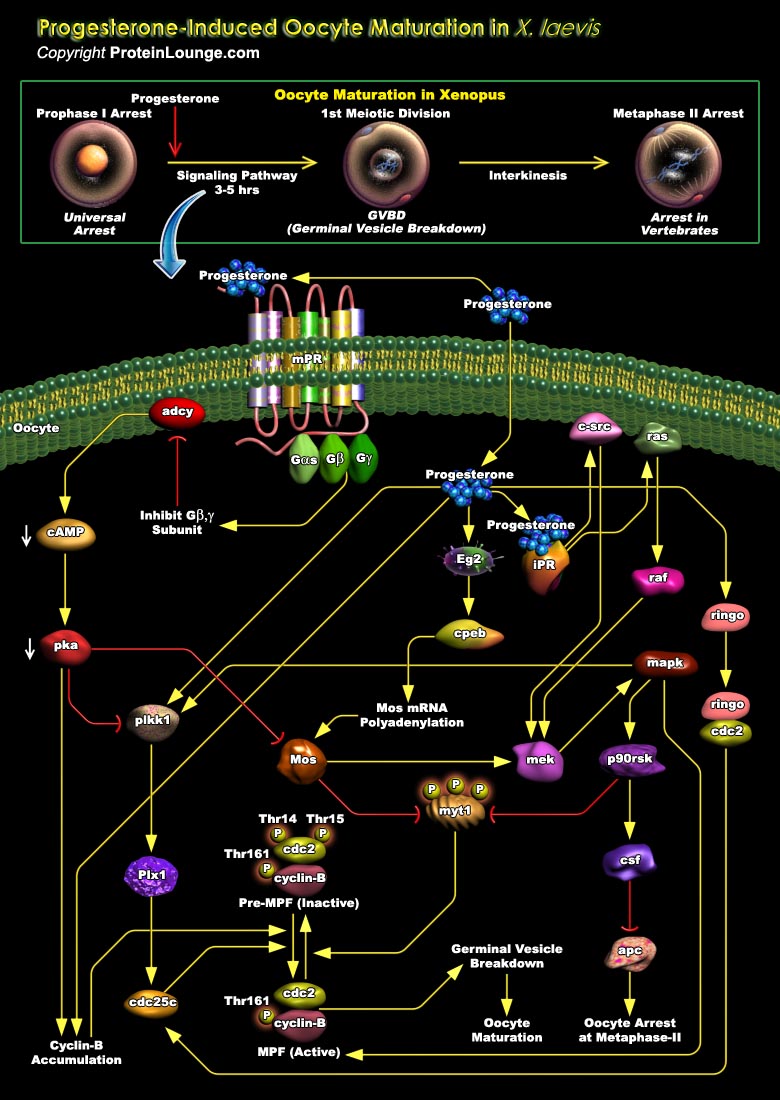
Oocyte maturation is the final process of oogenesis where the fully grown ooocytes undergo meiosis to become fertilizable. Oocyte maturation begins with the breakdown of the oocyte nucleus, the germinal vesicle (GV), which occurs by the rapid condensation of the chromosomes to the metaphase state which then move towards the animal pole and divide into two haploid sets and enter the meiosis II. Oocyte maturation in vertebrates is a complex process that requires several morphological, biochemical and ultra structural signaling events and may lead to decreased fertility if any of the programs is disrupted. Hormones like Progesterone can induce oocyte maturation in Xenopus laevis (X.laevis) (Ref.1 and 2). In Xenopus laevis, immature oocytes are physiologically[..]
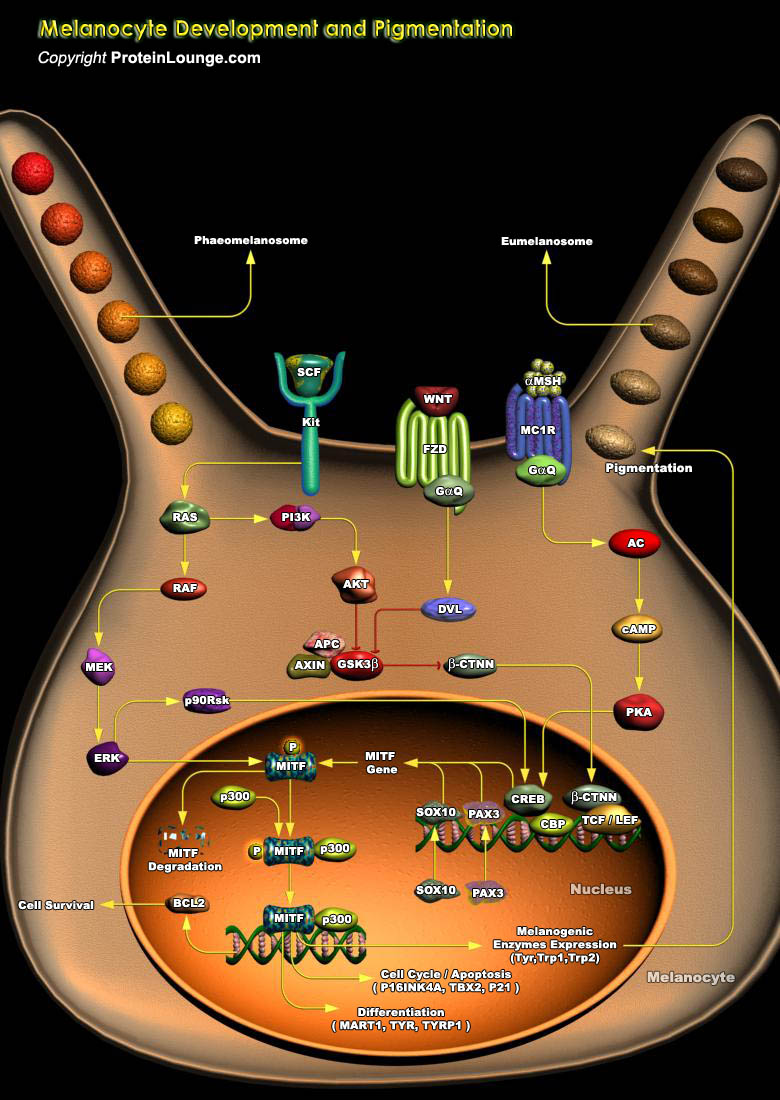
Melanocytes are melanin-producing cells found in skin, hair follicles, eyes, inner ear, bones, heart and brain of humans. Melanocytes are generally important for their role in Skin pigmentation, and their ability to produce and distribute Melanin is well known. Melanocytes are responsible for the endogenous synthesis of melanin pigments. Melanin is produced in Melanosomes, specialized organelles that are translocated from the center of the Melanocyte cytoplasm to the tip of its Dendrites. The Dendrites are then involved in the transfer of the Melanosomes to the Keratinocytes.Two main types of melanin pigment are synthesized in human, pheomelanin and eumelanin, and their combination leads to skin colour. Pheomelanin and eumelanin derive from a single precursor, the[..]
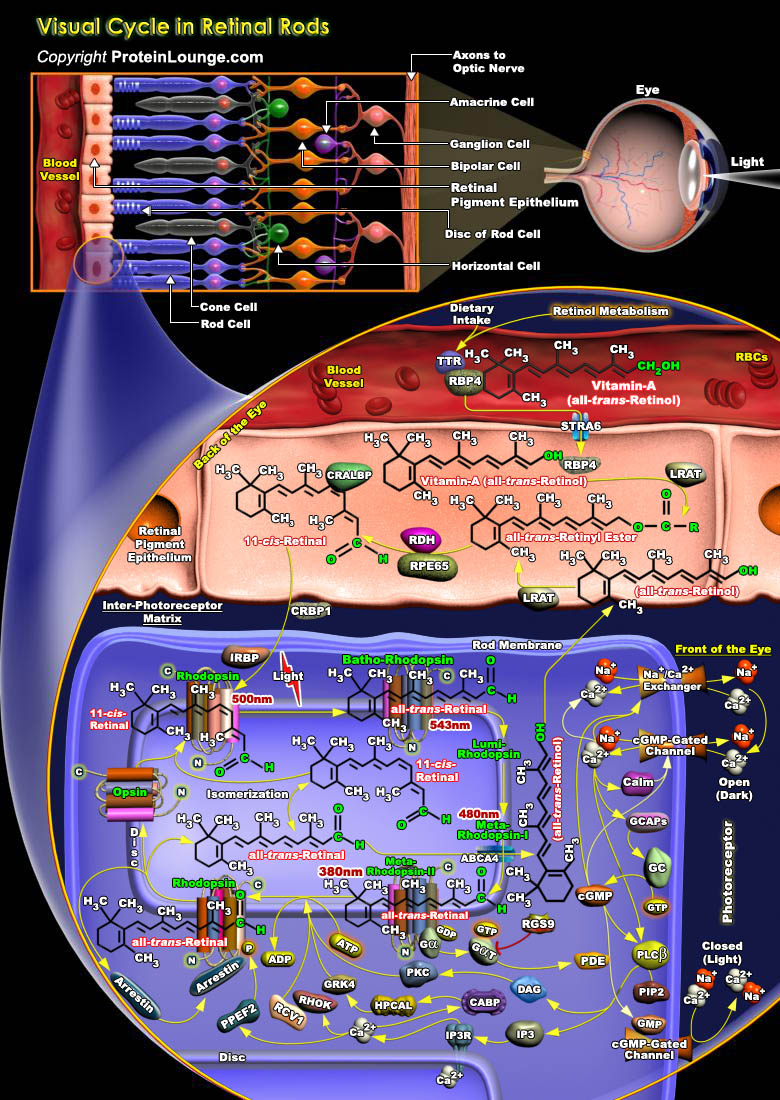
The processing of visual information begins in the retina with the detection of light by photoreceptor cells. In humans, two types of photoreceptors in the retina mediate the light response: the rods which mediate vision in dim light and the cones which mediate bright light and color vision. Humans have one rod and three cones for long, medium- and short-waves. Rhodopsin is the photosensitive pigment of the rod photoreceptor cell that initiates the visual signaling cascade and is comprised of a protein part (opsin) and the 11-cis form of vitamin A aldehyde (11-cis retinal) covalently bound to the opsin via a Schiff base linkage. Light converts the 11-cis bond to all-trans changing the inverse agonist to an agonist to enable the opsin to activate its G protein[..]
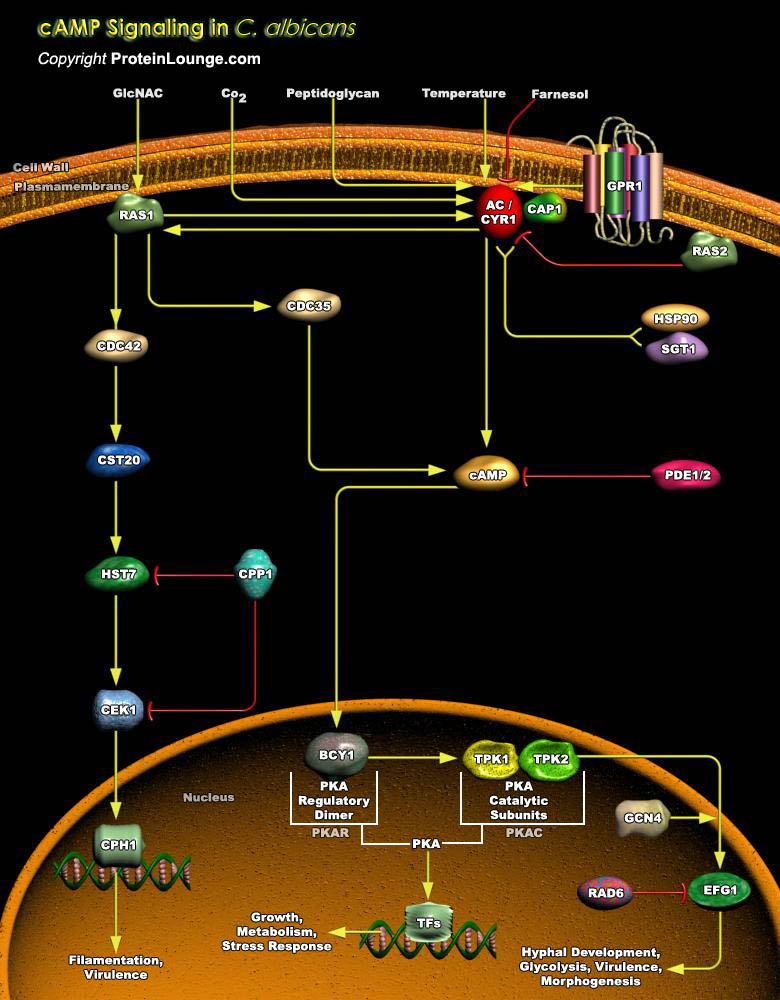
C. albicans (Candida albicans) is a polymorphic fungus which resides as a lifelong, harmless commensal organism in normal condition. Under certain circumstances, however, C. albicans can cause a wide range of superficial mucosal diseases as well as life-threatening systemic yeast infections in immunocompromised patients (Ref.1). C. albicans is is dimorphic in nature and has the ability to grow in a variety of morphological forms, including as budding yeast, pseudohyphae, and true hyphae (Ref.2). Different environmental cues like nutrient limitation, pH, temperature, CO2, N-Acetylglucosamine, and serum induces morphogenesis in C. albicans and the major pathways that control morphogenesis in C.albicans are RAS-MAPK pathway and cAMP-protein kinase A (PKA)[..]
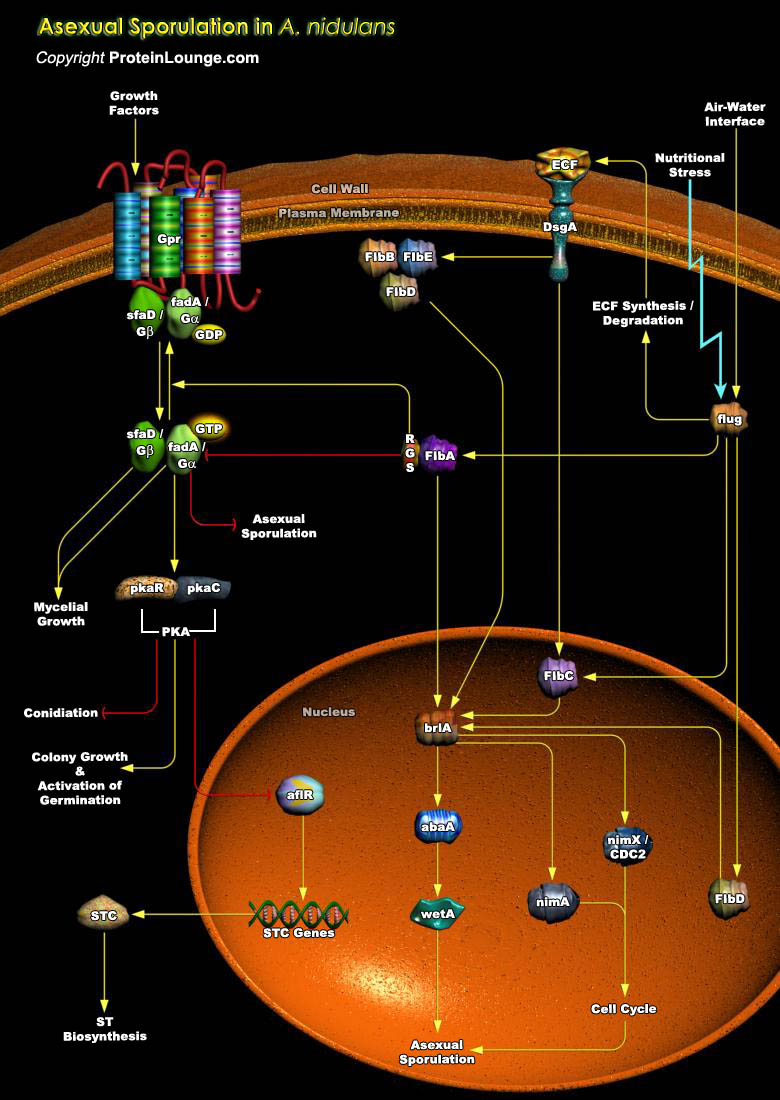
The signal transduction cascades regulating asexual sporulation in the Ascomycetous filamentous fungi A. nidulans (Aspergillus nidulans) can be divided into two phases: a Growth phase, in which cells become competent to respond to sporulation-inducing signals and an Asexual reproduction phase, including initiation of the Sporulation pathway and formation of spore-bearing structures. A. nidulans is homothallic (self-fertile). This fungus grows by forming an ordered network of filaments or hyphae that form a mycelium (Ref.1). The hyphae grow by apical extension and multiply by branching; giving rise to a radially symmetrical colony that expands at a constant rate. After a fixed period of time following vegetative growth, some hyphal cells within the center of the[..]

Chlamydiae are obligate intracellular Gram-negative bacteria mainly causing infection in warm blooded animals. Chlamydia includes four species: C.trachomatis, C.pneumoniae, C.psittaci, and C.pecorum, out of which C.pneumoniae, C.psittaci, and C.trachomatis are human pathogens. Chlamydophila pneumonia is responsible for a number of different acute and chronic infections. It causes causes both lower and upper acute respiratory illnesses. C.pneumoia is also believed to be associated with cardiovascular and central nervous system disorders (Ref.1 and 2). C.pneumonia has a biphasic developmental life cycle that alternate between two morphologically distinct forms, the elementary body (EB) which is infectious and environmentally resistant form and the reticulate[..]
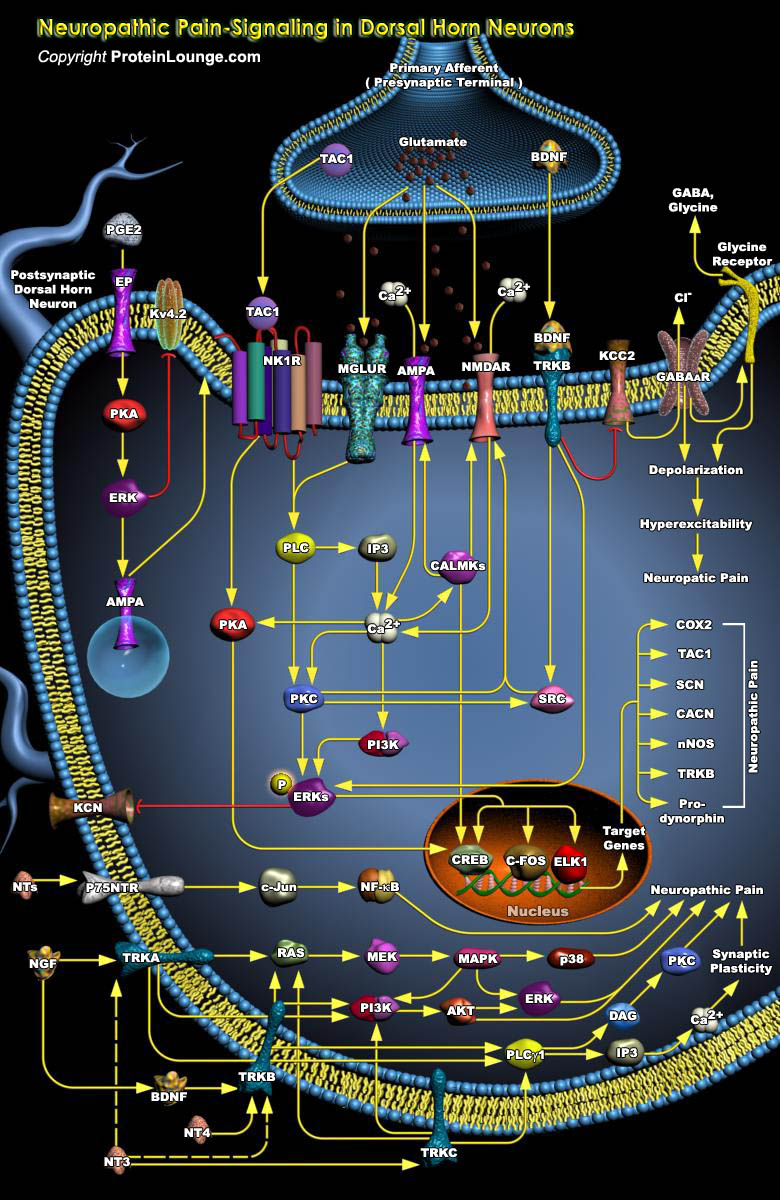
Inflammation is the process by which an organism responds to tissue injury involving both immune cell recruitment and mediator release. Diverse causes of neuropathic pain are associated with excessive inflammation in both the peripheral and central nervous system which may contribute to the initiation and maintenance of persistent pain. Chemical mediators, such as cytokines, chemokines, and lipid mediators, released during an inflammatory response have the undesired effect of sensitizing and stimulating nociceptors, their central synaptic targets or both. These changes can promote long-term maladaptive plasticity resulting in persistent neuropathic pain. Neuropathic pain typically develops when peripheral nerves are damaged such as through surgery, bone compression in[..]
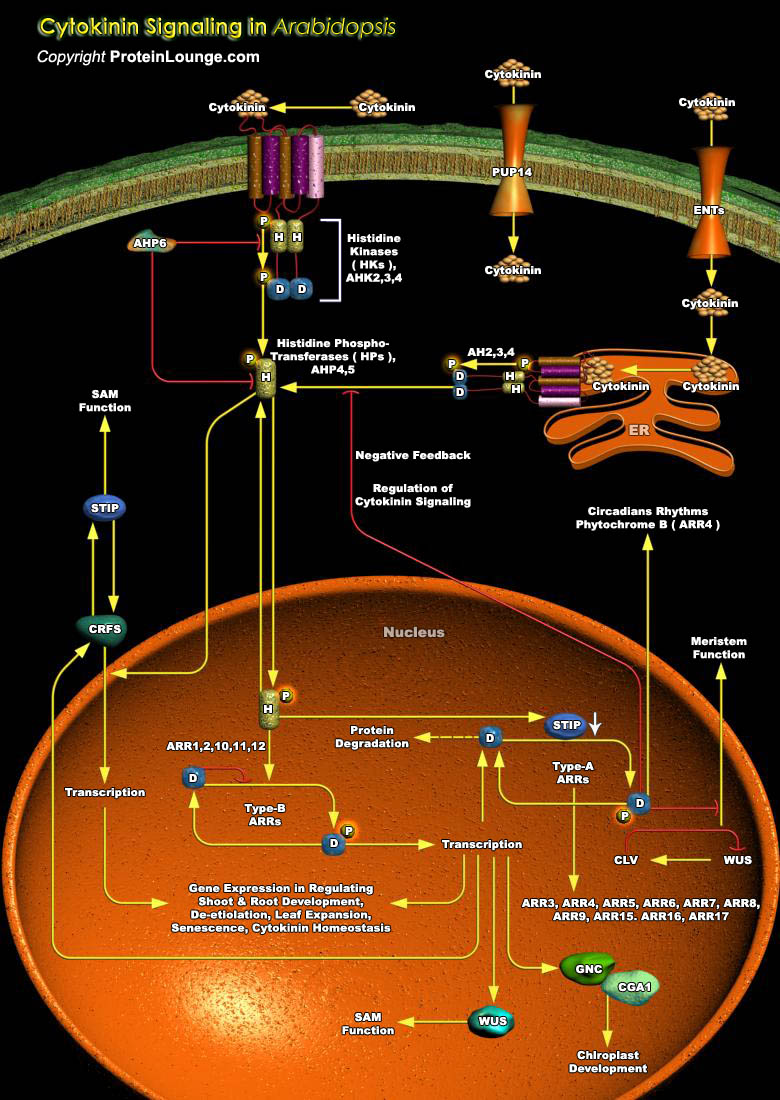
Cytokinins are a major class of phytohormones that belong to the family of adenine derivatives and are considered as a key regulator of many important plant developmental processes including embryogenesis, seed germination and development, stimulated leaf expansion, organogenesis, vascular patterning, nodulation, circadian clocks, light responses, nutrient status, transitions to flowering, immunity, senescence, and stress tolerance. The endogenous levels of cytokinins promote cell division, stem-cell specification, and chloroplast biogenesis whereas exogenously applied cytokinins in higher concentrations result in growth inhibition (Ref.1 and 2). Naturally occurring cytokinins are adenine derivatives that carry distinct substitutions like an Isoprene-derived[..]
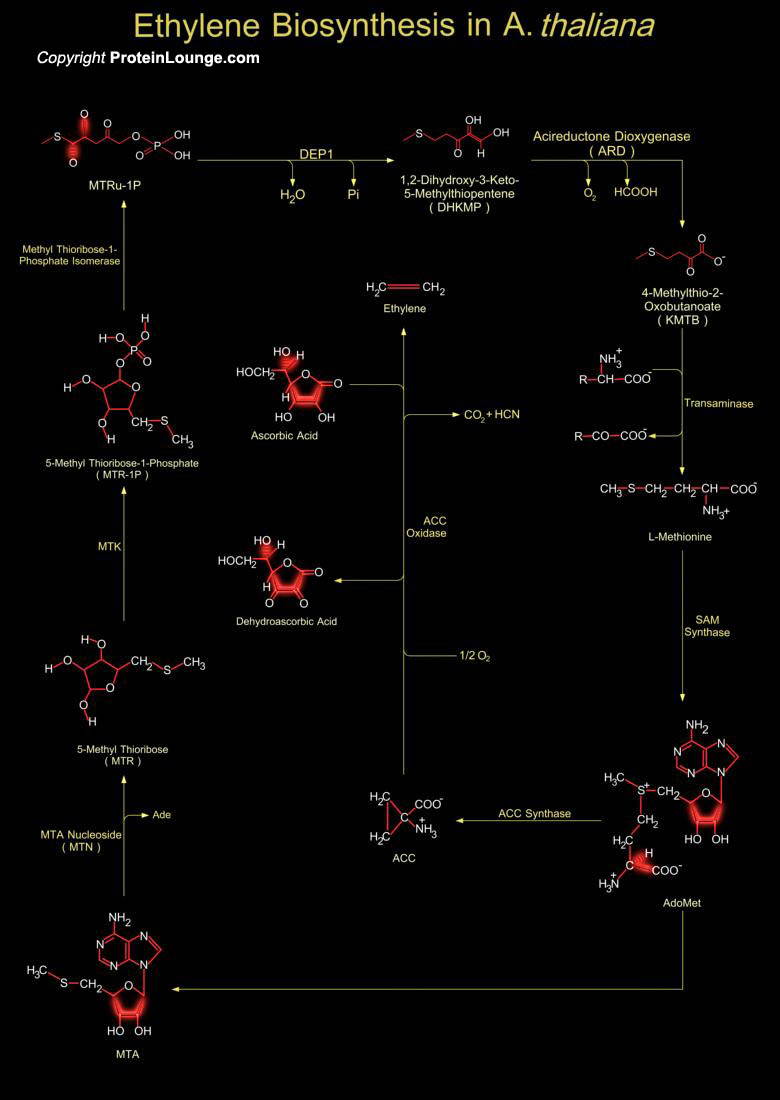
Ethylene (C2H4) is a naturally occurring plant hormone involved in a large number of developmental processes including leaf abscission, ripening of Fruit, senescence, responses to Wound, seed germination, growth of adventitious roots under flooding conditions, epinasty stimulation, inhibition of shoot growth and stomatal closing and flowering (Ref. 1). Naturally occurring ethylene is present in trace amounts. It can also be produced either chemically through the incomplete combustion of hydrocarbons and biologically by almost all living organisms. In higher plants like Arabidopsis, a relatively simple metabolic pathway controls the biosynthesis of ethylene. Ethylene biosynthesis levels change in response to endogenous developmental cues as well as exogenous signals[..]
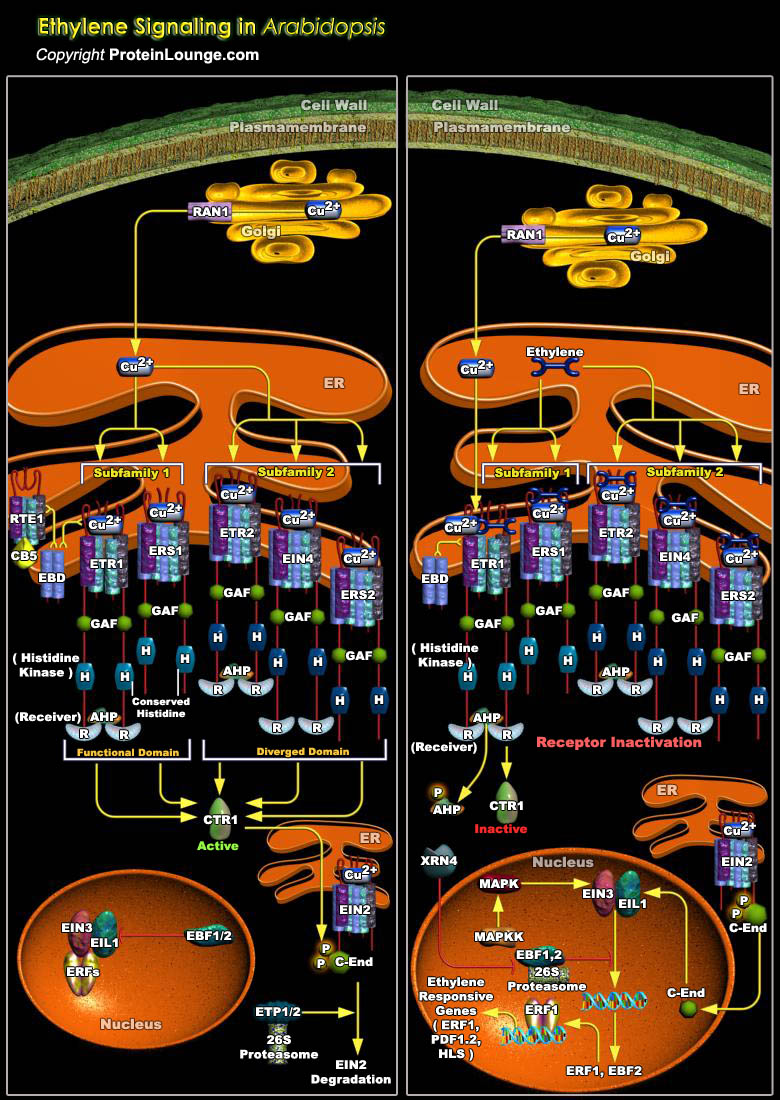
Ethylene (C2H4) is a naturally occurring plant hormone involved in a large number of developmental processes including leaf abscission, ripening of Fruit, senescence, responses to Wound, seed germination, growth of adventitious roots under flooding conditions, epinasty stimulation, inhibition of shoot growth and stomatal closing and flowering (Ref. 1). A combination of genetic, biochemical, and molecular approaches is uncovering ethylene signaling pathway in plants. Ethylene perception and response are mediated by a family of integral membrane receptors (ETRs) localized at the ER-Golgi network. The signaling takes place when the ethylene hormone binds to the ER-based ETR receptors that generally act as negative regulators of the ethylene signaling in the absence of[..]

The ability of the immune system to respond appropriately to foreign antigen is dependent on a delicate balance of activating and inhibitory signals. Although positive signaling is essential for the generation of effective immunity, counterbalancing the immune response by inhibitory pathways is equally important. Loss of inhibitory signaling is often associated with autoreactivity and unchecked inflammatory responses, illustrating the essential role these systems play in immune regulation (Ref.1). Pairing of activation and inhibition is therefore, necessary to modulate immune responses. The activation threshold of various cells in the immune system is tuned by immune inhibitory receptors. The inhibitory Fc (Crystalline Fragment) Receptor, Fc-Gamma-RIIB (Fc-Gamma[..]
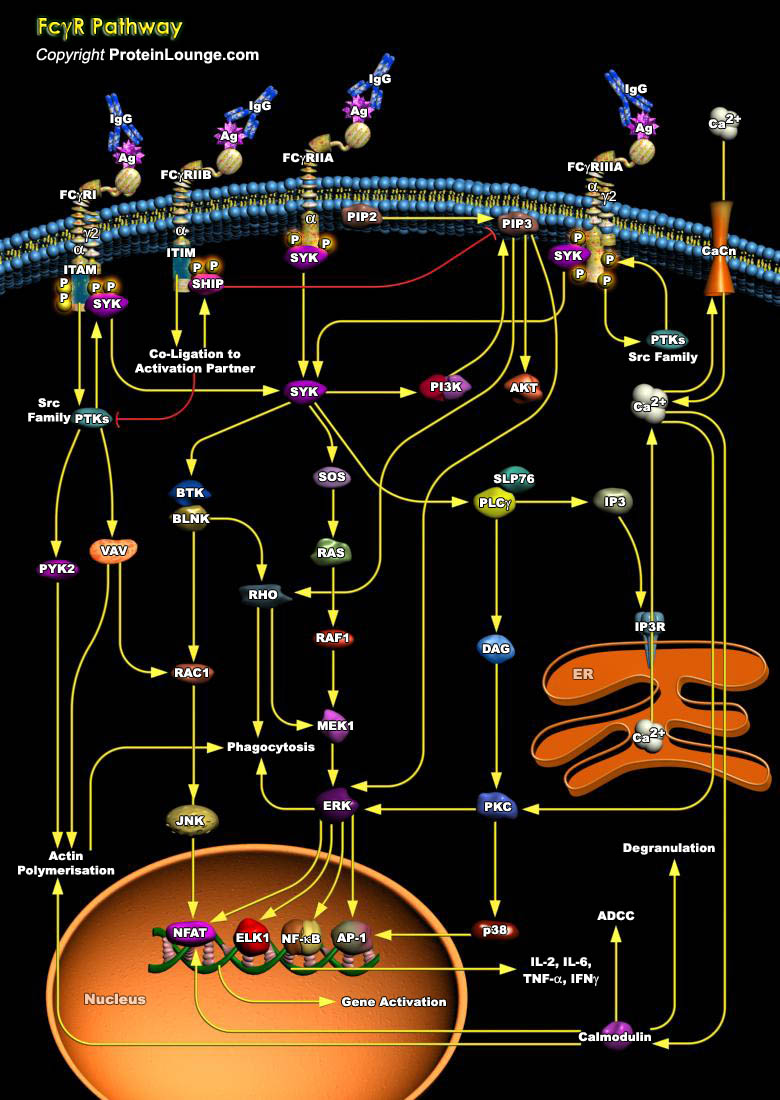
Fcγ receptors are a family of glycoproteins expressed on the membrane of immune cells, and capable of binding the Fc portion of IgG antibody molecules. These receptors bind to various IgG subclasses with different affinities, and when crosslinked by multivalent antigen-antibody complexes, can induce different cellular responses. In humans, several activating receptors (FcγRI/CD64, FcγRIIa/CD32a and FcγRIIIa/CD16a), one inhibitory receptor (FcγRIIb/CD32b), and one glycosylphosphatidylinositol (GPI)-linked receptor, lacking a cytoplasmic tail (FcγRIIIb/CD16b) have been identified [Ref.1].All activating FcγR containing ITAM sequences signal in a similar way at least at the first signaling step. After crosslinking of activating[..]

